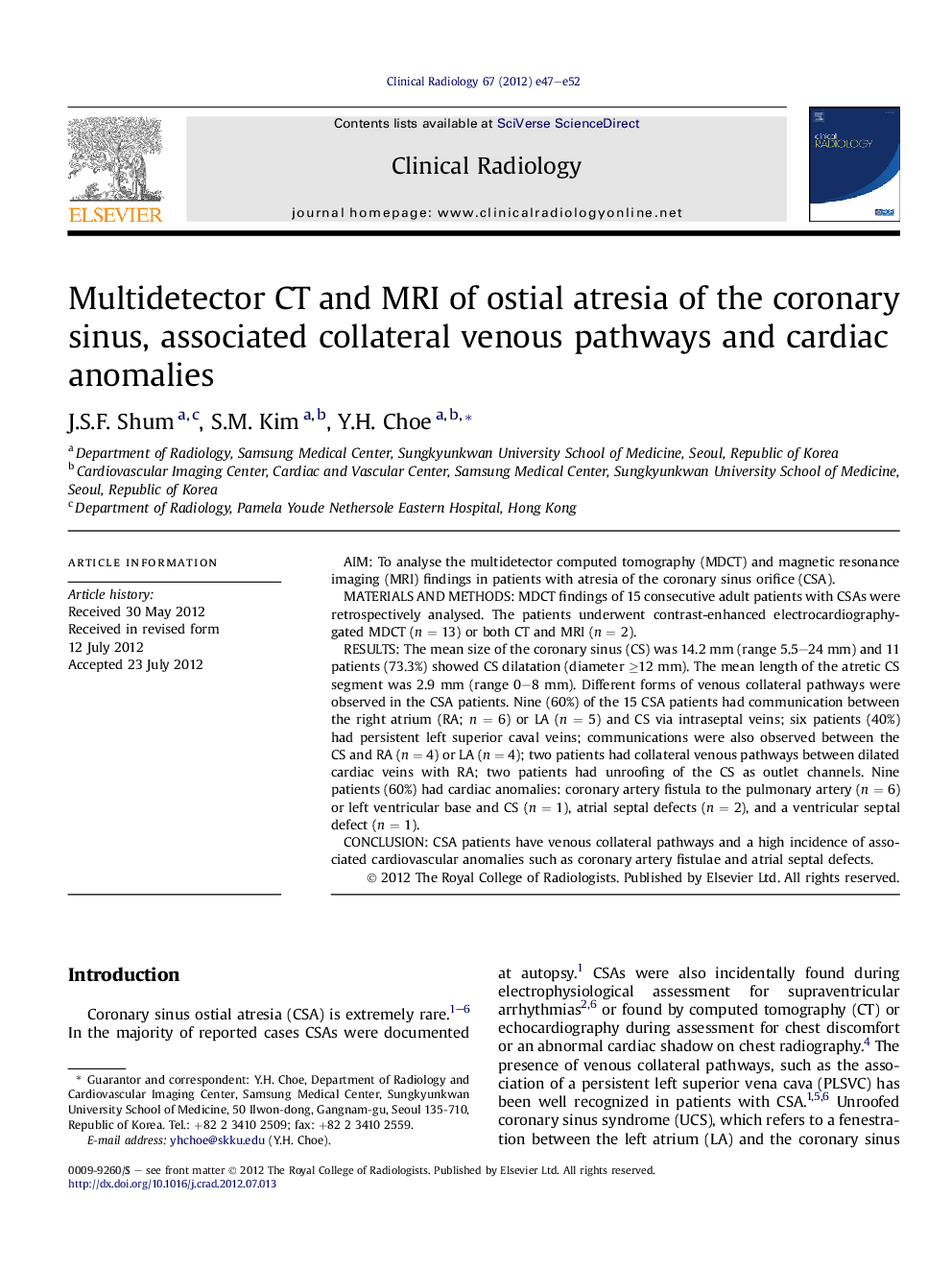| Article ID | Journal | Published Year | Pages | File Type |
|---|---|---|---|---|
| 3982872 | Clinical Radiology | 2012 | 6 Pages |
AimTo analyse the multidetector computed tomography (MDCT) and magnetic resonance imaging (MRI) findings in patients with atresia of the coronary sinus orifice (CSA).Materials and methodsMDCT findings of 15 consecutive adult patients with CSAs were retrospectively analysed. The patients underwent contrast-enhanced electrocardiography-gated MDCT (n = 13) or both CT and MRI (n = 2).ResultsThe mean size of the coronary sinus (CS) was 14.2 mm (range 5.5–24 mm) and 11 patients (73.3%) showed CS dilatation (diameter ≥12 mm). The mean length of the atretic CS segment was 2.9 mm (range 0–8 mm). Different forms of venous collateral pathways were observed in the CSA patients. Nine (60%) of the 15 CSA patients had communication between the right atrium (RA; n = 6) or LA (n = 5) and CS via intraseptal veins; six patients (40%) had persistent left superior caval veins; communications were also observed between the CS and RA (n = 4) or LA (n = 4); two patients had collateral venous pathways between dilated cardiac veins with RA; two patients had unroofing of the CS as outlet channels. Nine patients (60%) had cardiac anomalies: coronary artery fistula to the pulmonary artery (n = 6) or left ventricular base and CS (n = 1), atrial septal defects (n = 2), and a ventricular septal defect (n = 1).ConclusionCSA patients have venous collateral pathways and a high incidence of associated cardiovascular anomalies such as coronary artery fistulae and atrial septal defects.
